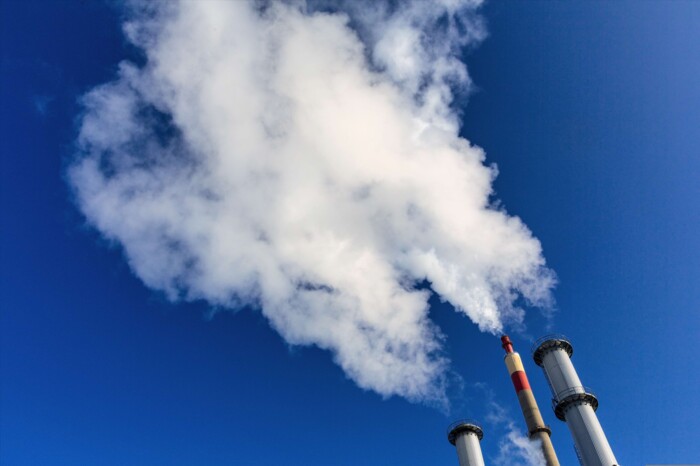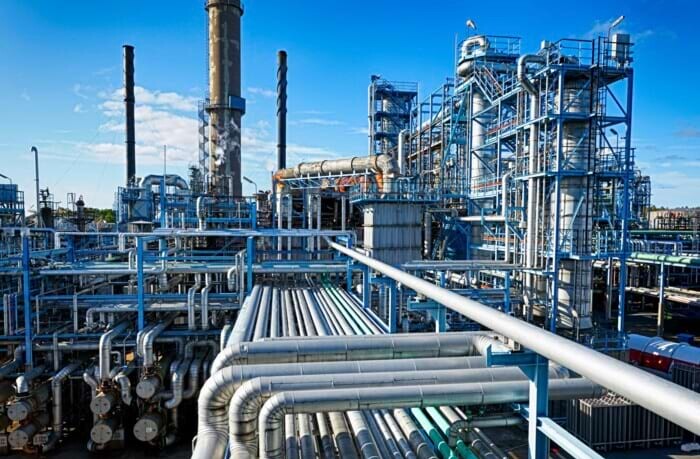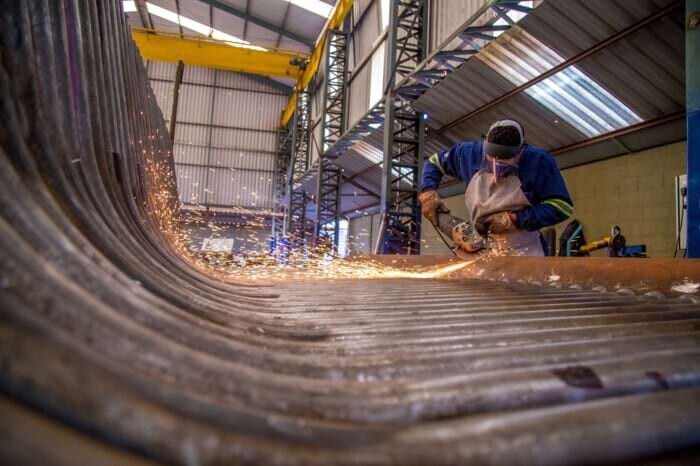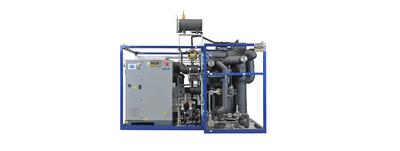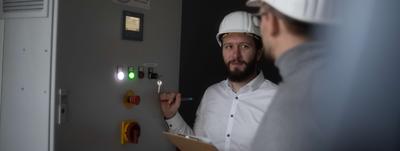Filtering:
Activated carbon has a large surface area that can adsorb dissolved particles. The carbon acts as a reducing agent and can absorb oxidizing agents such as ozone and chlorine from the waste air and from process and waste water. The absorbed substances concentrate in the carbon. Depending on the type of activated carbon, concentrations of ten to around 20 percent by weight are possible. Then a breakthrough occurs. Exhausted activated carbon is replaced. The absorbed solids increase the filter resistance and have to be removed from the filter bed. The filter can be regenerated by washing, heating or replacing the activated carbon.
Thermal post-combustion:
Thermal post-combustion requires temperatures of up to 900°C and sufficient residence time in the combustion area. In the simplest case, thermal post-combustion can take place in other industrial combustion plants (e.g. boiler houses). Otherwise, the necessary temperature must be generated by additional fuels. The process then becomes very complex and generates additional air pollution. During thermal post-combustion, the waste gases are completely converted to water and carbon dioxide, except for the foreign elements nitrogen, sulphur and halogens.
Cryo-Kondensation:
Contaminants from the waste gas are condensed by the cooling of the waste gas line. The concentration of a solvent (e.g. nitrogen or air) depends on the temperature. At lower temperatures, less volatile gases can be absorbed. The waste air is cooled to a temperature that complies with the legally prescribed limit values by condensing the solvents. The highly volatile, organic components in the waste air stream are present as liquid condensate after the process. They can either be returned to the production process, purified, disposed or sold. The cryo-condensation process is typically used to separate alcohols, alkanes, chlorinated hydrocarbons or aromatics. Cryo-condensation offers an efficient and sustainable solution to make waste air purification economical.
Physical waste air purification systems:
Physical waste air purification systems use physical processes like filtration, absorption or adsorption to remove contaminants from waste air. These technologies are effective in removing particles and suspended solids.
An example of a physical waste air purification system is a dust filter. This filter consists of different layers that trap the particles in the exhaust air. The waste air is cleaned and cleared of harmful substances through filtration. Physical waste air purification systems can also use absorption or adsorption processes. Physical waste air purification systems can also use absorption or adsorption processes. In absorption, the contaminants are absorbed by an absorbent material. In adsorption, the contaminants stick to the surface of an adsorbent material
Chemical waste air purification systems:
Chemical waste air purification systems use chemical reactions to neutralize or convert harmful gases or vapours in the waste air. This is often achieved through the use of chemicals or catalysts. An example for a chemical waste air purification system is a scrubber system. This system uses a liquid that is brought into contact with the harmful gases or vapors. Chemical reactions neutralize the contaminants and the purified waste air is released.
Catalysts are also an important component of chemical waste air purification systems. They accelerate the chemical reactions and enable a more efficient conversion of the harmful compounds.
Biological waste air purification systems:
Biological waste air purification systems can be especially effective in the treatment of organic compounds. Biological processes such as microorganisms or plants break down or recycle harmful contaminants in the exhaust air. An example for a biological waste air purification system is a biofilter system. In this system, the harmful contaminants are broken down by microorganisms. The waste air is passed through a filter filled with a mixture of organic material and microorganisms. The microorganisms decompose the contaminants and convert them into harmless substances. In addition to biofilter systems, plants can also be used to clean the exhaust air. Plants have the ability to absorb harmful substances and convert them into oxygen. This process, known as phytoremediation, can be an effective and sustainable method of exhaust air purification in certain cases.

